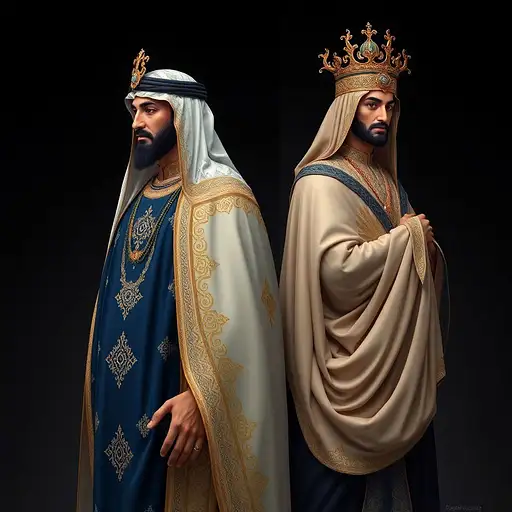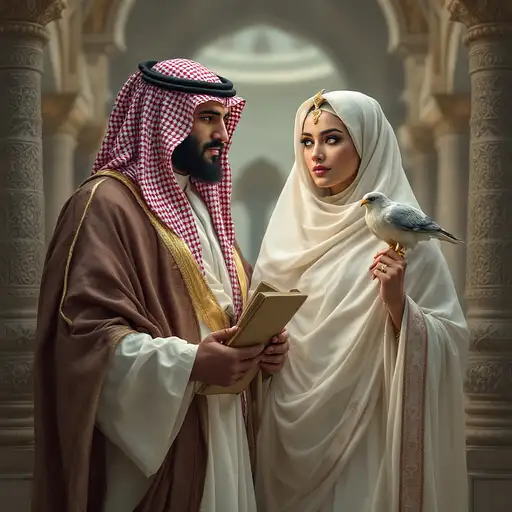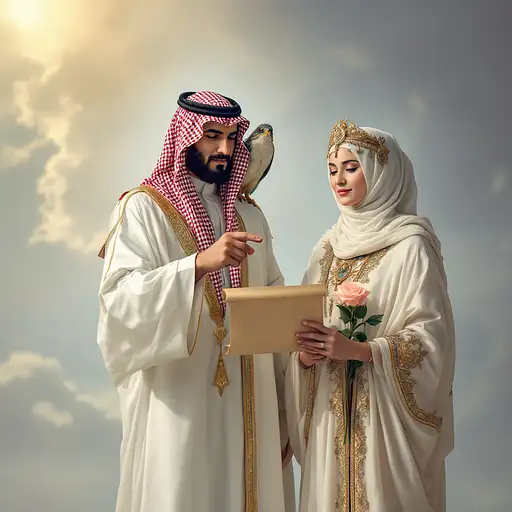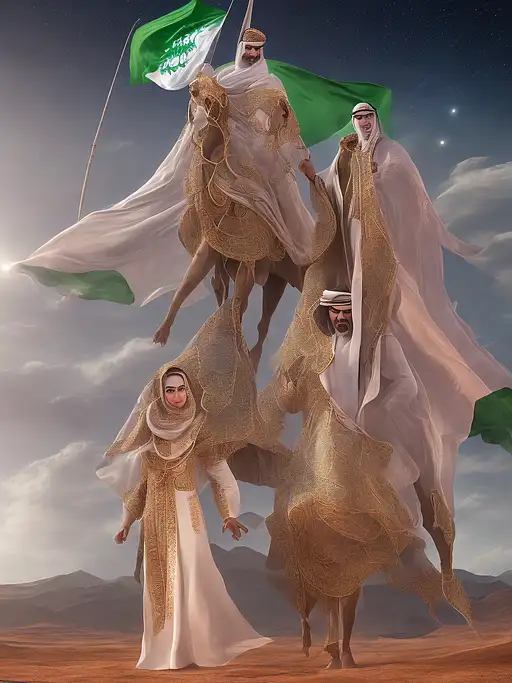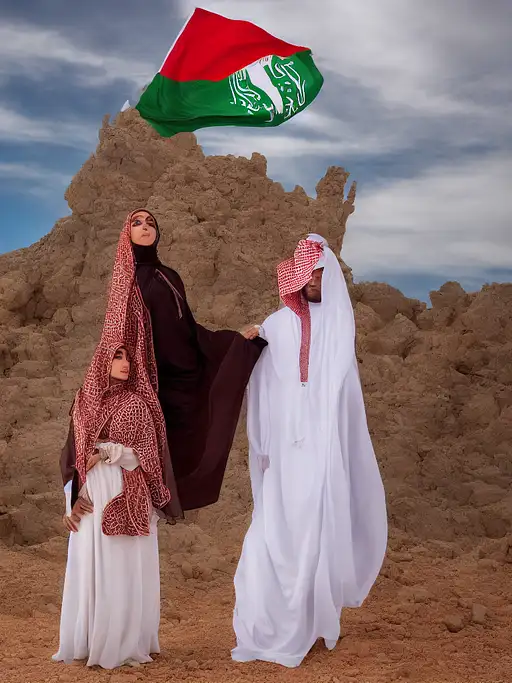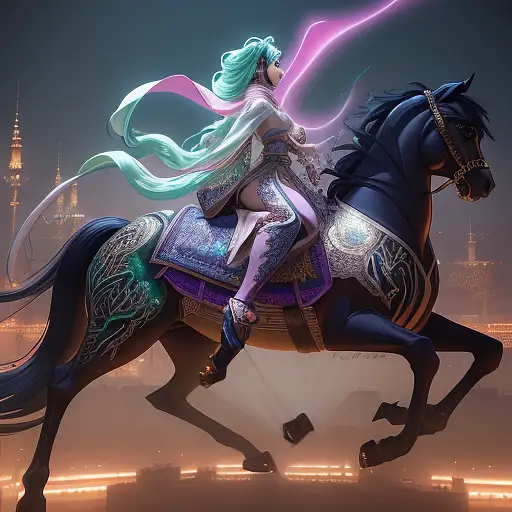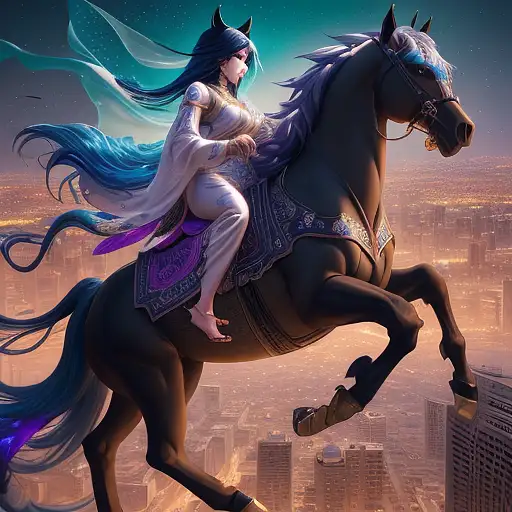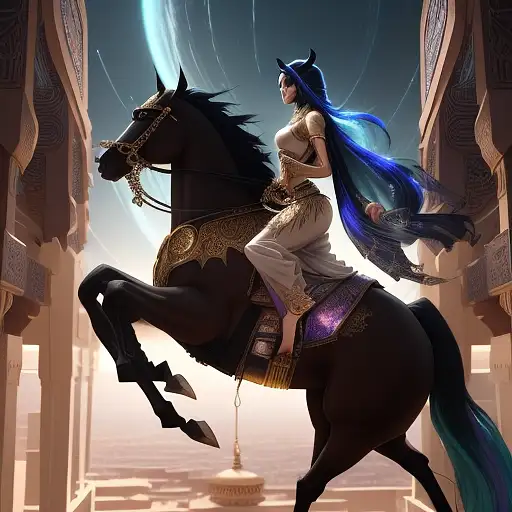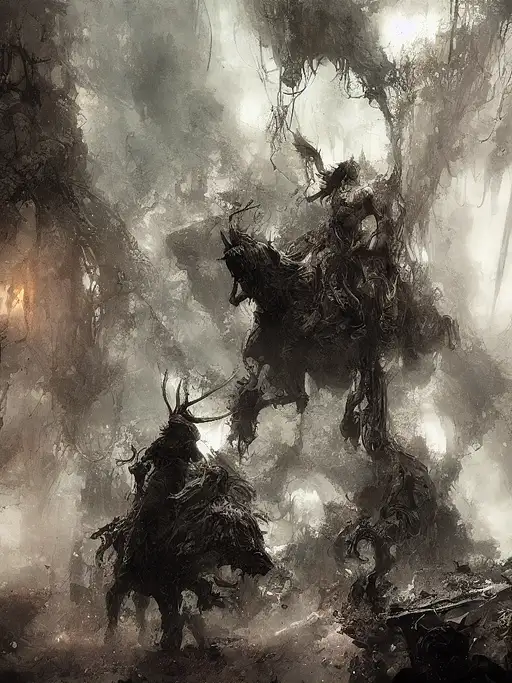
10 months ago
Detailed Prompt for Image Generation: In the realm of Greek mythology, two divine figures emerge, embodying the rich cultural heritage of Saudi Arabia. These deities, Al-Rashid, the God of Wisdom and Prosperity, and Al-Najdi, the Goddess of Resilience and Hospitality, are depicted with the utmost attention to detail, capturing the essence of Hijazi and Najdi traditions. Al-Rashid, God of Wisdom and Prosperity: Attire: Al-Rashid is adorned in a resplendent thobe, meticulously embroidered with gold and silver threads, reflecting the opulence of Hijazi craftsmanship. The thobe is a deep indigo, symbolizing wisdom and authority. Over his thobe, he wears a flowing, semi-transparent bisht, draped gracefully over his shoulders, adding a touch of regality. Headwear: His head is covered with a traditional white ghutra, intricately patterned with gold and silver geometric designs, secured by a black agal. The agal itself is a masterpiece, woven with fine threads and adorned with small, gleaming beads. Accessories: Around his neck, Al-Rashid wears a delicate gold chain with a pendant in the shape of a falcon, a symbol of his connection to the land and its traditions. His wrists are adorned with intricately designed gold bracelets, each featuring intricate engravings and small gemstones. Staff: In his right hand, he holds a staff made of ebony wood, intricately carved with symbols of knowledge and prosperity. The staff is topped with a golden orb, representing the sun and its life-giving energy. Expression: His face is serene and wise, with deep, contemplative eyes that seem to hold the secrets of the universe. His beard is neatly trimmed, adding to his dignified appearance. Al-Najdi, Goddess of Resilience and Hospitality: Attire: Al-Najdi is dressed in a rich, earth-toned thobe, woven from the finest camel hair, symbolizing the resilience and adaptability of the Najdi people. The thobe is adorned with subtle, earthy patterns, reflecting the natural beauty of the Najdi landscape. Over her thobe, she wears a flowing, semi-transparent abaya in a deep burgundy, adding a touch of elegance and grace. Headwear: Her head is covered with a traditional red ghutra, patterned with intricate, geometric designs in gold and silver, secured by a white agal. The agal is woven with fine threads and features small, decorative tassels. Accessories: Around her neck, Al-Najdi wears a simple, yet elegant, leather cord with a small, intricately carved wooden amulet. Her wrists are adorned with sturdy, leather bracelets, each featuring small, symbolic carvings. Falcon: In her left hand, she holds a majestic falcon, its feathers meticulously detailed to capture the essence of this noble bird. The falcon's eyes are sharp and alert, symbolizing vigilance and protection. Expression: Her face is warm and welcoming, with a gentle smile that radiates hospitality. Her eyes are bright and lively, reflecting her spirited nature and love for her people. Background: The two deities stand in a grand, ancient temple, its walls adorned with intricate carvings and mosaics depicting scenes from Saudi history and mythology. The temple is bathed in a soft, golden light, casting gentle shadows that enhance the detailed textures of their attire. In the distance, the silhouette of a traditional Najdi fort can be seen, adding to the sense of timelessness and cultural richness. This detailed depiction captures the essence of Saudi tradition and mythology, bringing to life the gods Al-Rashid and Al-Najdi in all their regal splendor.

